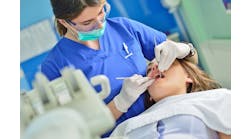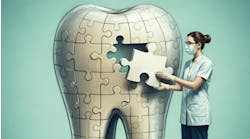Author’s note: Levin Group has reviewed and prioritized hundreds of strategies to increase practice production. Check this column each month to learn the next powerful idea. This month’s practice production priority is presenting ideal dentistry.
After extensive research for a book I’m working on about case presentation, I’ve figured out more then 80 key factors that affect this area of practice management. While this may sound extremely complex, one of the simplest factors I found has nothing to do with the patient presentation itself.
The simple approach is to diagnose all ideal dentistry for every patient. This includes both need-based and elective options. The objective is to identify all treatment that will benefit a patient both physically and emotionally. Identifying all the clinical needs that the patient has will address the physical factor, and identifying all potential elective services addresses the emotional factor.
No more “Let’s watch it”
Too often, we enter the hygiene room and identify a specific problem, but we don’t inform the patient that the problem should be treated now. We say, “Let’s watch it,” often to the relief of the patient. But what exactly are we watching?
Enjoy more practice building ideas from Roger Levin
3 objectives to building a superior team
How good is your case acceptance, really?
Have we ever seen a failing restoration improve by itself, a tooth with a clinical problem get better on its own, or an aging denture that’s causing bone loss improve over time? We all know none of this will happen. The reason we want to wait on treatment is to gradually ease the patient into determining on their own that treatment is necessary.
To get past this waiting and watching, we must overcome our own inhibitions and identify all clinical and elective options for patients. Once we identify ideal treatment, we can bring together our case presentation skills to work with patients to choose the best treatment option. Potential options include performing treatment all at once or performing phased treatment.
The main point is that identifying all need-based elective dentistry in an ideal manner and presenting it to patients will have a positive impact on practice production. You can also increase production by identifying elective treatment and presenting it as well.
Some practices are still reticent to present elective dentistry. Keep in mind that the esthetics industry is a multibillion-dollar industry that includes makeup, face creams, hair products, eyeglasses, and much more. The opportunity for dental practices to participate in cosmetic treatment, implants, and other elective services is enormous, and I believe still largely untapped. This is a great opportunity and will benefit both patients and practices.
Editor's note: This article appeared in the May 2023 print edition of Dental Economics magazine. Dentists in North America are eligible for a complimentary print subscription. Sign up here.







